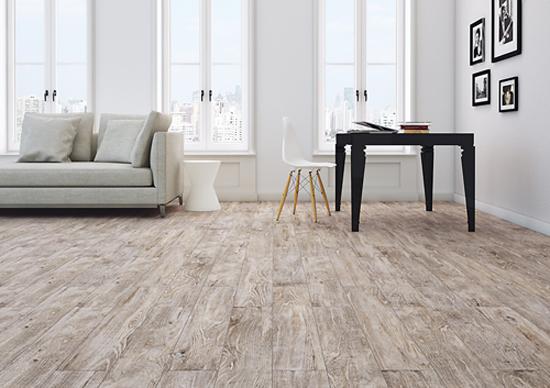Brazilian Tile Show: Revistir - April 2012
By Kemp Harr
The shifting sands of international commerce have resulted in rapid change for the Brazilian tile market. Domestic tile producers who once focused on the export market have now shifted their focus toward satisfying their own healthy domestic demand for product. While still important, the U.S. has become less of a focus because of our own anemic housing situation and because the U.S. dollar has lost value in relationship with the Brazilian real. Exports in 2004 were around 30% but now that number has dropped to 8%. While Brazilian tile is considered to be a notch above Chinese tile in quality and aesthetics, it is at a disadvantage since the real does not fluctuate with the dollar, like China’s yuan does.
As one of the BRIC countries, Brazil is on track to overtake the United Kingdom this year as the sixth largest economy in the world, with GDP growth of around 5%. In the last decade, the country has focused on developing its middle class and reducing its dependence on foreign oil—two very smart strategies for economic prosperity.
Revistir, the annual Brazilian tile and stone expo, is owned by Anfacer, the Brazilian trade association for ceramic tile manufacturers. This year, attendance grew 14% to just over 40,000 professionals. This four-day trade show is linked to a forum of globally renowned speakers, which acts as an added incentive for attendee participation. Each of the four days has a separate theme focus. This year, the first day was focused on interior design, the second day was focused on retail, the third day was focused on contractors and the final day was focused on architecture.
While most of the focus in on ceramic tile and sanitaryware (plumbing fixtures), exhibitors like Quick-Step (laminate), Tarkett (resilient) and Amtico (LVT) were also at the show. Foreign tile suppliers like Fiandre and Florim (from Italy) also were exhibitors.
PRODUCT TRENDS
Many of the same trends we saw last fall at the Cersaie show in Italy are also prominent here. Safe neutral colors are the core of most products on display. But to keep the product exciting, textures and tone on tone stencils give the product just enough edge to elevate the tile medium above alternative surfaces like stained concrete. Grout lines continue to disappear as formats continue to get larger. And while high-definition digital printing technology opens the door for extravagant visuals, manufacturers are exercising restraint—especially when they choose to emulate natural stone and concrete slabs. Faux wood strips, on the other hand, are a completely different story. Producers are taking bold steps by first making the product look antique or weathered by adding irregular surface texture and then complementing that effect with bold visuals that depict wood grain, weathering, bleaching and other rustic visuals. Some producers are adding a rainbow of color tones to their collections of wood products.
One trend that is contrary to what sells well here in the U.S. is the high gloss polishing and lighter wood colors that were prominent is several of the new collections we observed.
EXHIBITOR HIGHLIGHTS
The two largest domestic tile producers are Portobello and Eliane and they are in the process of merging into one company with multiple brands. Portobello is better known in Brazil for its upper-end goods but both brands have a wide range of looks and price points.
One of the more interesting exhibits at the show was for Eliane’s upscale brand called DécorTiles. Eliane is the only Brazilian importer to the U.S. that has maintained a distribution center (located in Dallas, Texas) throughout this economic downturn.
Gyotoku, which concentrates primarily on the domestic commercial market, focused most of its new products introductions on large formats with neutral styling. Paris, one of its more popular new styles, looks like rough concrete accented with glitter.
Villagres, one of oldest tile producers in Brazil (founded 80 years ago), has invested heavily in updating its manufacturing processes. The firm is coming back to the U.S. Coverings show this year and it services the U.S. through distributors in Florida, Arkansas and Texas.
Portinari was one of the first Brazilian tile companies to invest in digital printing technology, and it used to be a OEM supplier to Mohawk. The company is a member of the U.S Green Building Council and many of its products are targeted for the commercial sector of the market.
|
CULTURAL OBSERVATIONS FROM A FIRST TIME VISITOR |
|
Sao Paulo is the largest city in Brazil and the seventh largest city in the world. Portuguese is the spoken language and English-speaking visitors may have a little more trouble communicating with natives than in Europe or Asia. One gets the feeling that while the Portuguese language is similar to Spanish, Brazilians feel strongly that it is a separate language altogether and not just another dialect. Traffic congestion is a major issue and as a result there are helicopter pads on top of many of the buildings. While Sao Paulo's middle-class is evolving, there is still a significant gap between the haves and the have-nots, so you see an abundance of walls topped with razor wire or electric fences surrounding many of the homes and businesses. The climate is tropical with intense sun and moist air (the city is 42 miles from the coast). Most of the cars are small with manual transmissions, and small-engine motorcycles dart between the traffic lanes with little regard for safety. |
Copyright 2012 Floor Focus
Related Topics:Mohawk Industries, Coverings, Florim USA, Tarkett, CERSAIE
